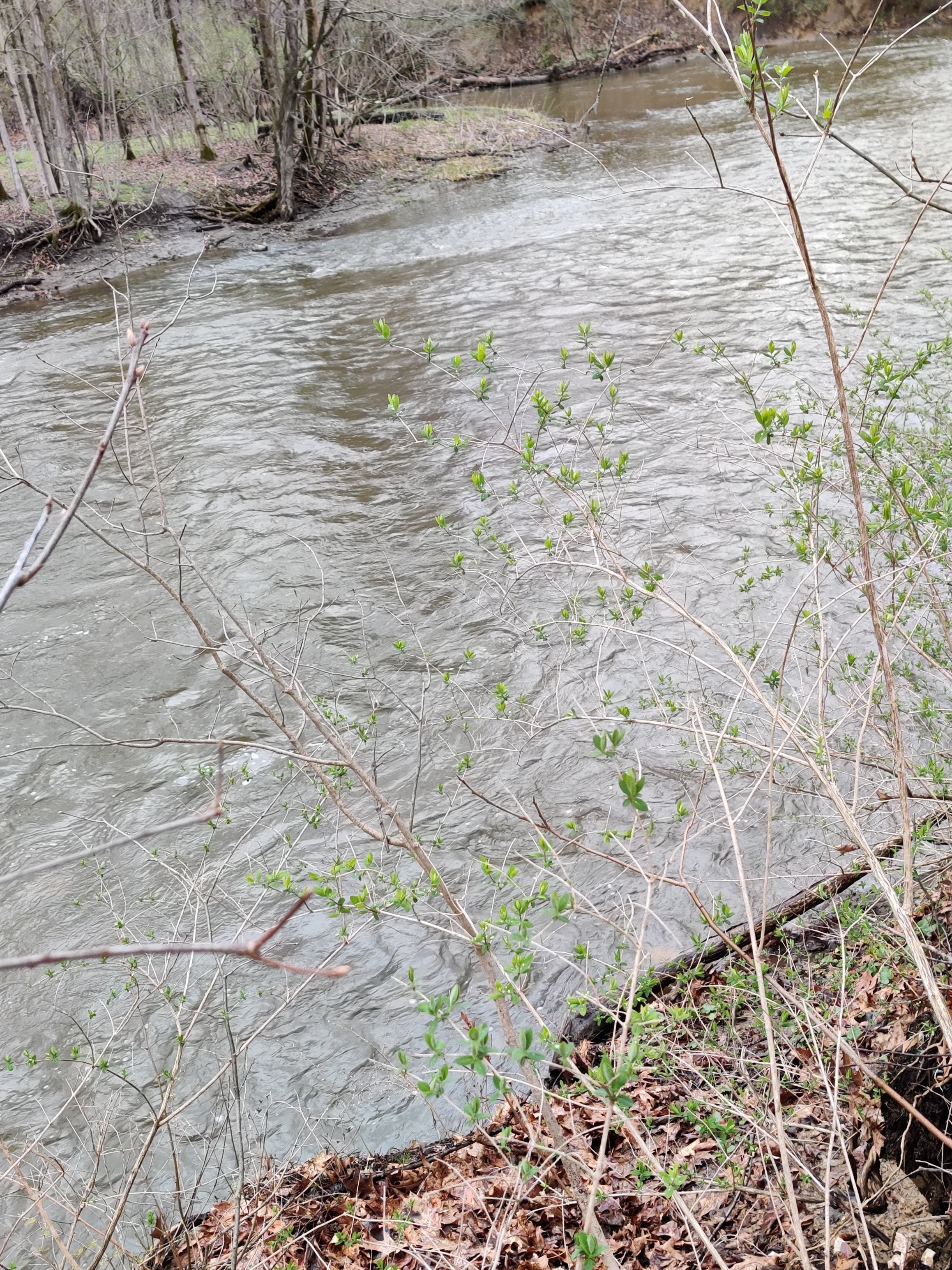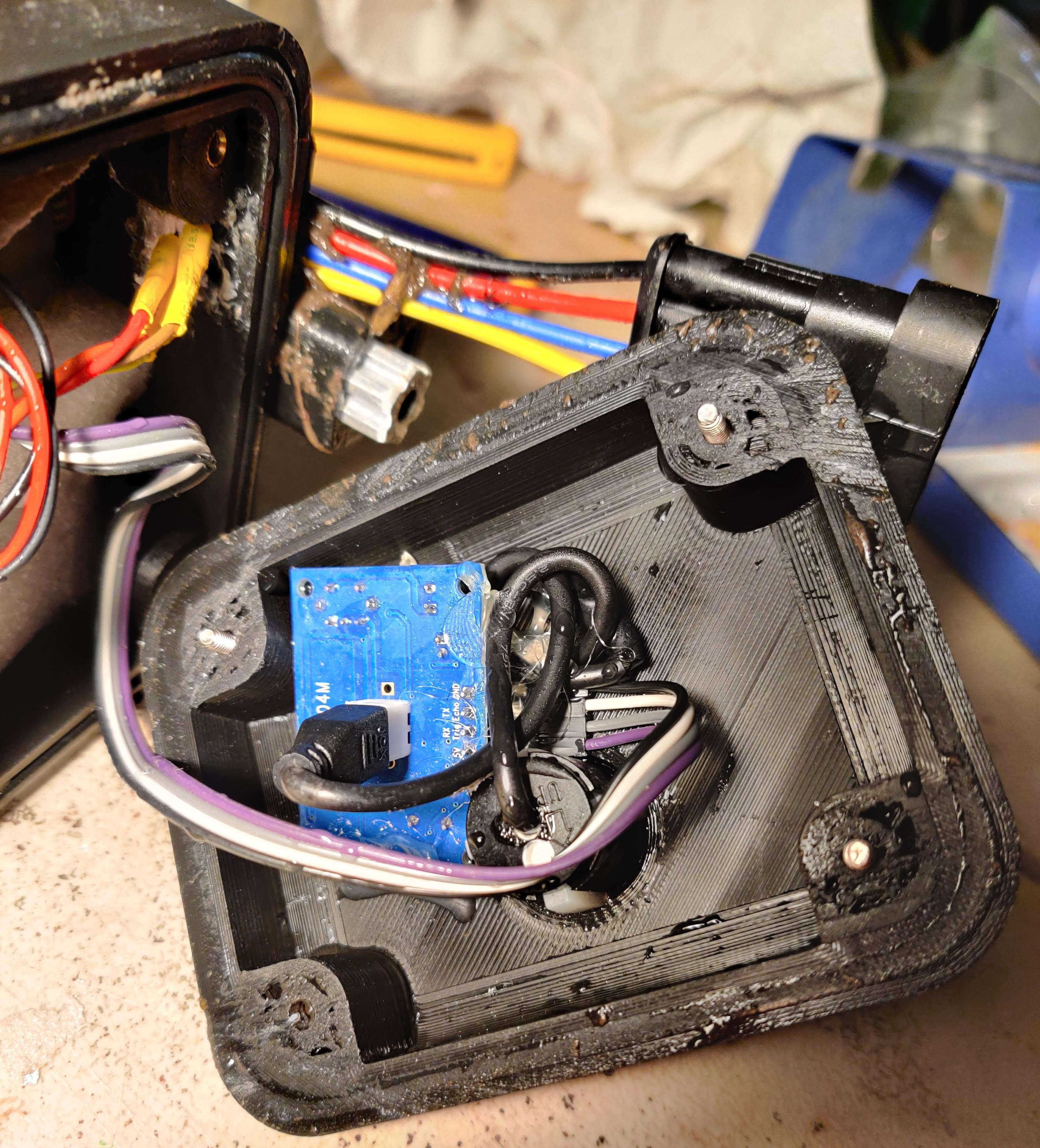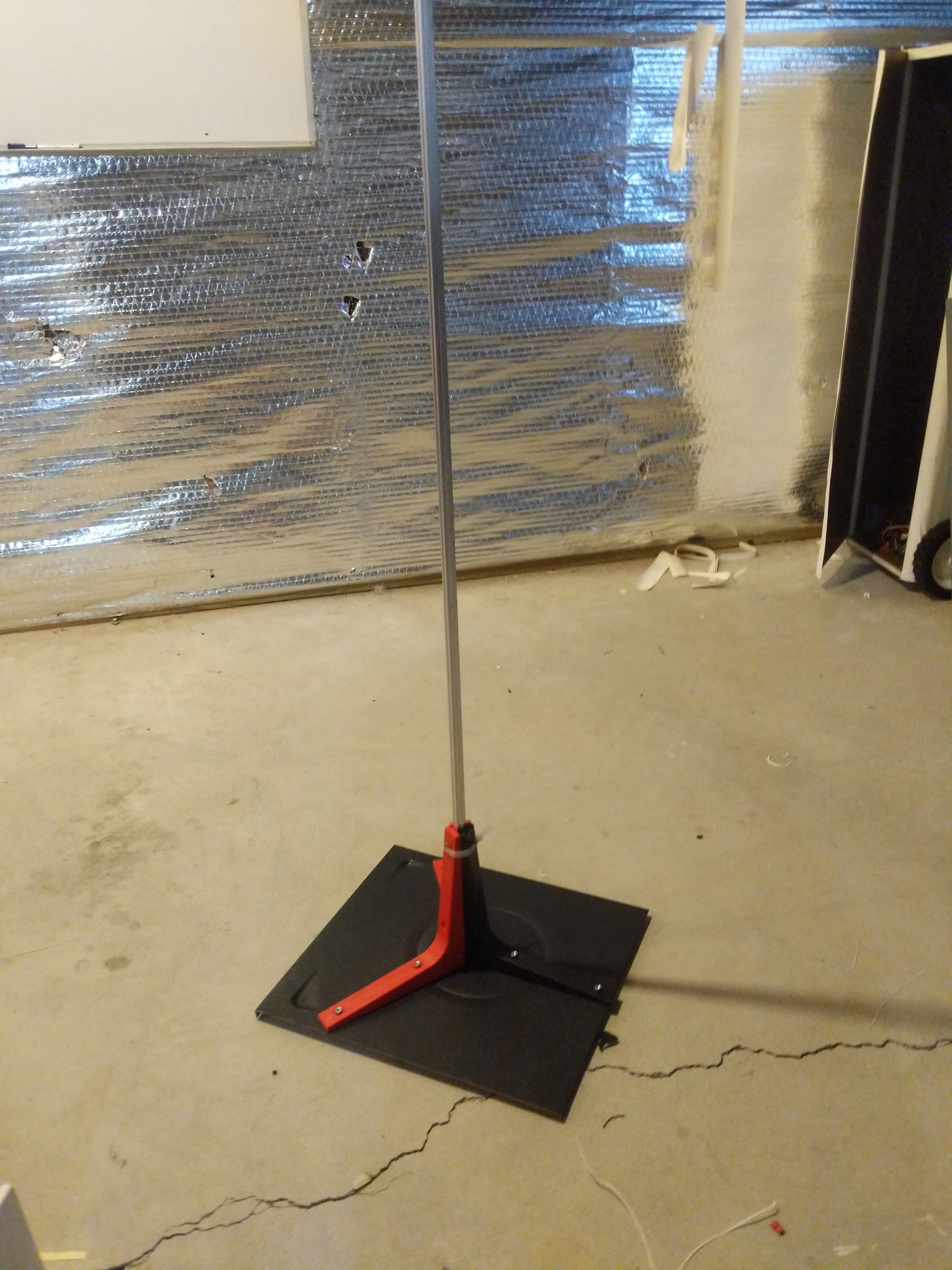Our sensor mysteriously stopped reporting measurements back to us yesterday around 3 am. The battery and cellular strength all seemed to be acceptable, so we were unsure what had happened to it. The last few readings from the sensor show the stream water level rising rapidly, but nothing that we hadn't seen before in previous rain storms. When we visited the sensor that evening here's what we saw.

Yeah, we didn't see the sensor either. After getting into the river, we found our whole sensor and mounting plate had tipped over and our sensor was entirely submerged under the water. We did not have very high hopes for the sensor, as it had probably been under the water for a good 18 hours by then. But, miraculously, the sensor woke up as usual as soon as we pressed its reset button.

When I later took it apart to inspect the damage, I found that the insides were very moist, but there was no puddle of water or major damage to the internals. We determined that the mounting solution was what needed fixing rather than the device it self.
When we first started the project, our initial idea for mounting was to hammer in a hexagonal aluminum extrusion into the river bed and mount the sensor directly to the top of it. When we came to Alplaus, we found that the rocky bed would not allow us to get the extrusion deep enough to be held securely.
Our next solution was a frankenstein of L brackets and an old desktop side cover. This would use rocks to weigh down the metal plate and hold the extrusion upright.

You may be able to see why this design didn't end up working. As soon as the water level and velocity rises, the metal plate acts like a sail and sends our sensor straight into the water. We need some more stability against tipping. So, continuing with the frankenstien theme, our current plan is to combine the two ideas.
First, we'll start by using a steel rod and a hammer to create a hole in the river bed. Then the aluminium extrusion will be placed in that hole. And finally, the metal plate will be attached to the pole and have rocks to weight it down to add some stability.
 Rohan Menon
Rohan Menon
Discussions
Become a Hackaday.io Member
Create an account to leave a comment. Already have an account? Log In.